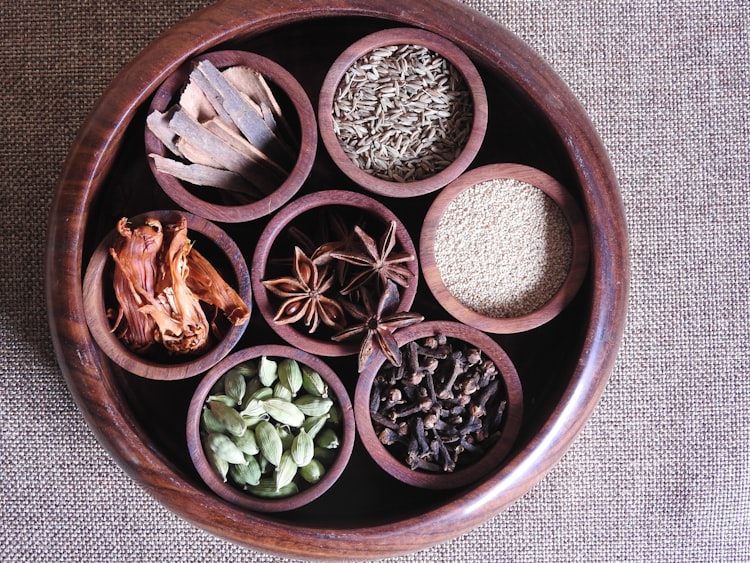Bhutanese Gastronomy

Bhutanese gastronomy places a strong emphasis on preserving its traditional methods of cooking and using locally sourced ingredients. This isolated country has a lot of distinct character, providing a unique culinary experience that is not to be missed. For such a small, less popular country, the cuisine packs quite a punch!
Culture and Geography
History
Bhutanese food is heavily influenced by the country's unique geography, climate, and cultural heritage. One of the most significant cultural influences on Bhutanese food is Buddhism. The majority of Bhutanese people are Buddhists, and their beliefs have a significant impact on the way they approach food. For example, many Bhutanese are vegetarian, and those who eat meat prefer to consume it sparingly and with great respect.
Another cultural influence on Bhutanese cuisine is the country's location and its history of trade with neighboring countries. Bhutan is situated between India and China, and its cuisine reflects a mix of Indian, Tibetan, and Chinese influences. Spices and herbs, such as ginger, garlic, and chilies, are common in Bhutanese cuisine and are used to add flavor and depth to dishes.
Bhutanese food is also influenced by the country's agrarian culture. Agriculture is a significant part of the Bhutanese economy, and the country's cuisine relies heavily on locally grown produce such as rice, potatoes, and buckwheat. The meals themselves are traditionally served out of wooden bowls and eaten with your hands.
One unique aspect of Bhutan as a country is the fact that it chose to isolate from most of the world up until relatively recently. Bhutan's isolationism, which was the country's policy of remaining isolated from the rest of the world until the mid-20th century, had a significant impact on the development of its cuisine. As a small, landlocked country nestled in the Himalayas, Bhutan had limited contact with other cultures and relied heavily on its own resources for food. Bhutan gastronomy today is therefore extremely traditional and not strongly influenced by globalization in the same way many cultures are today.

Regions
Bhutanese cuisine varies from region to region, reflecting the country's diverse geography and agricultural practices. The country is broken up into 4 district zones and 20 smaller districts, or dzongkhags. These governmental districts do not always map directly to culinary and geographical sentiment, so we will just refer to the regions of Bhutan as the western, central, and eastern parts.
The western part of Bhutan is known for its spicy dishes and abundant use of chili peppers. This region is also home to the national dish, Ema Datshi, a spicy dish made with chilies and cheese. The central region of Bhutan is known for its meat-based dishes, particularly pork, and the use of a fermented cheese called Bja. The eastern region of Bhutan is known for its use of buckwheat, which is used to make noodles and pancakes.
Bhutan's geography plays a significant role in its cuisine. The country's mountainous terrain and cold climate make it difficult to grow crops, particularly in the higher altitudes. As a result, Bhutanese cuisine relies heavily on hardy crops such as rice, potatoes, and buckwheat, which can grow in harsh conditions. The country's agricultural practices also influence its cuisine. The practice of terraced farming, for example, allows farmers to cultivate crops on steep mountain slopes.
Overall, the regional varieties of Bhutanese cuisine are closely tied to the country's geography and agricultural practices. Each region has developed its unique culinary traditions, incorporating local ingredients and cooking methods.
Ingredients
Overall, Bhutanese cuisine is characterized by its use of locally sourced ingredients and traditional cooking techniques. The country's reliance on chili peppers and other spices, along with its emphasis on meat and rice, makes Bhutanese cuisine a unique and flavorful culinary experience.
Vegetables: A variety of vegetables are used in Bhutanese cuisine, including potatoes, carrots, cabbage, and spinach. However, the most prominent vegetable in Bhutanese cuisine is chili peppers. Chilies are used in nearly every dish in Bhutanese cuisine and are often the dominant flavor.
Meats/Fish: Meat is a staple in Bhutanese cuisine, particularly pork and beef. Yak meat is also commonly used in some regions. Fish is less common, but freshwater fish such as trout and carp are occasionally used in certain dishes.
Carbs: Rice is a staple in Bhutanese cuisine and is served with almost every meal. Both white and red rice are grown. Red rice is like brown rice but with a nutty taste. Buckwheat is another common grain used in Bhutanese cuisine, particularly in the eastern part of the country. Noodles are also used in some dishes, mostly those adopted from the Tibetian culture.
Herbs/Spices: Bhutanese cuisine relies heavily on herbs and spices to add flavor to dishes. Some of the most commonly used herbs and spices include ginger, garlic, turmeric, cumin, coriander, and cardamom. As previously mentioned, chilies are a ubiquitous ingredient in Bhutanese cuisine and are used in various forms, including fresh, dried, and powdered.
Condiments/Sauces: A fermented vegetable dish called kharang is sometimes served as a condiment.
Major Ingredients
Chili peppers
Potatoes
Cheese
Yak
Red Rice
Buckwheat
International Highlights
Ema Datshi
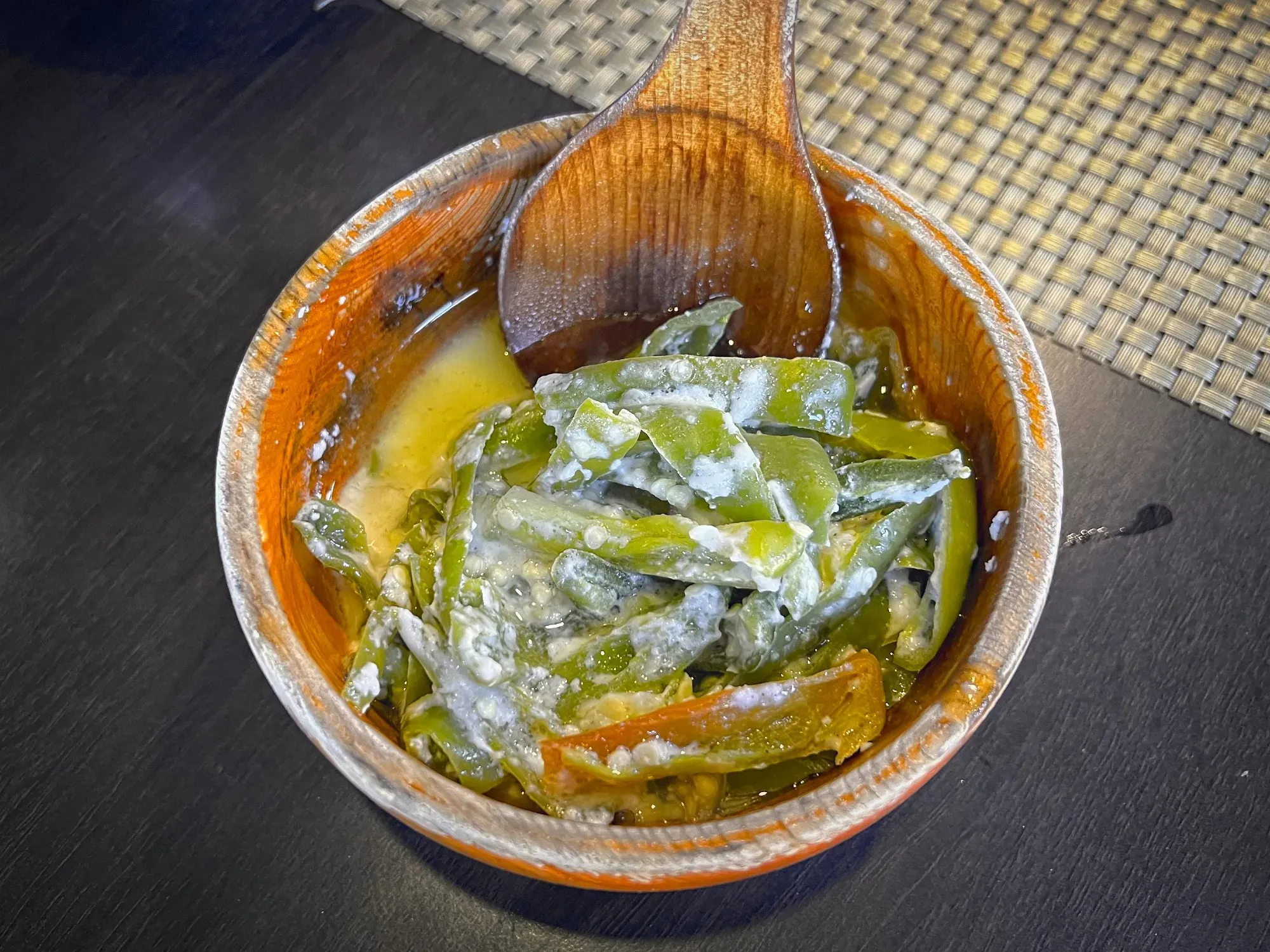
Ema Datshi is the national dish of Bhutan and a beloved staple of Bhutanese cuisine. It is a spicy dish made with chili peppers and cheese, typically served over rice. The origin of Ema Datshi is unclear, but it is believed to have been developed in the eastern part of the country.
The cheese used in Ema Datshi is typically a local Bhutanese cheese called datshi, which is made from cow or yak milk. The cheese is melted down with butter and mixed with chili peppers, creating a thick and creamy sauce with a fiery kick.
There are several other datshi varieties used in Bhutanese cuisine, including:
- Kewa Datshi – Potatoes and cheese
- Shamu Datshi – Mushrooms and cheese
- Phaksha Datshi - Pork and cheese
- Shakam Ema Datshi – Jerkey and cheese
- Shakam Shukam Datshi – Unique chillies and jerkey with regional white chillies
- Gondo Datshi - Scrambled eggs and cheese (with lots of butter and bit of chillies)
Each variety uses the same cheese and chili pepper base, but incorporates different ingredients to create a unique flavor profile.
Ema Datshi is not only a beloved dish in Bhutanese cuisine, but it also holds cultural significance. Its popularity and heritage have made it a cornerstone of Bhutanese identity and a must-try dish for visitors to the country.
Shakam Paa / Phaksha Paa
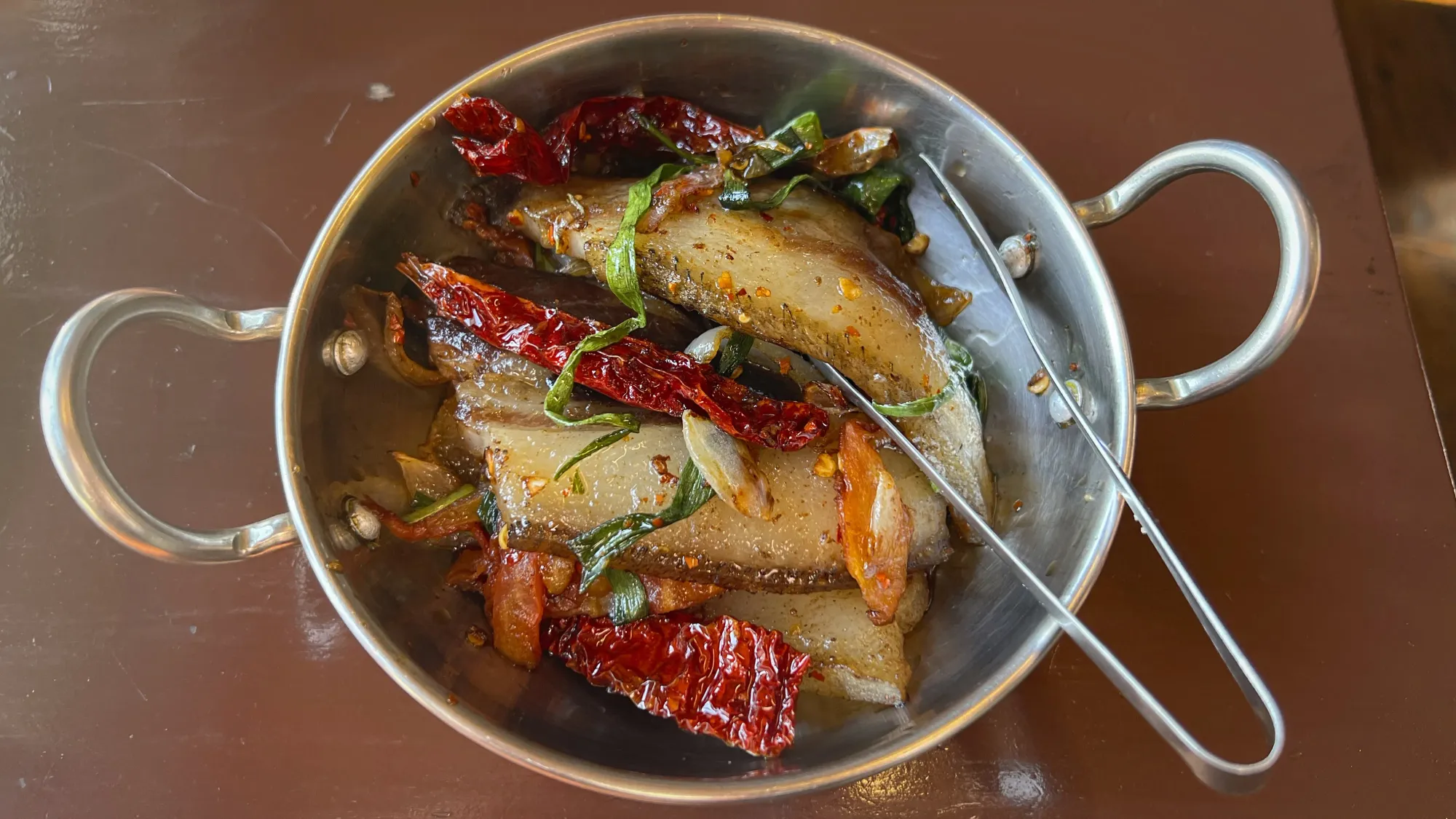
Shakam Paa is a traditional Bhutanese dish made with dried beef jerkey that is first marinated in chili pepper and salt and then smoked over a fire. The meat is then diced and used in various dishes, including soups and stews.
The origin of Shakam Paa can be traced back to the eastern region of Bhutan, where it was originally developed as a way to preserve meat for the long winter months. The process of smoking the meat not only helped to preserve it but also infused it with a smoky flavor that is now synonymous with the dish.
It is also commonly served as a side dish, often accompanied by rice or bread. There are other varieties of paa- second most famously being Paksha Paa, which is made with pork. Sikam Paa, bacon with chillies, is another oily but delicious paa creation.
Jasha Maroo (Jasha Maru)
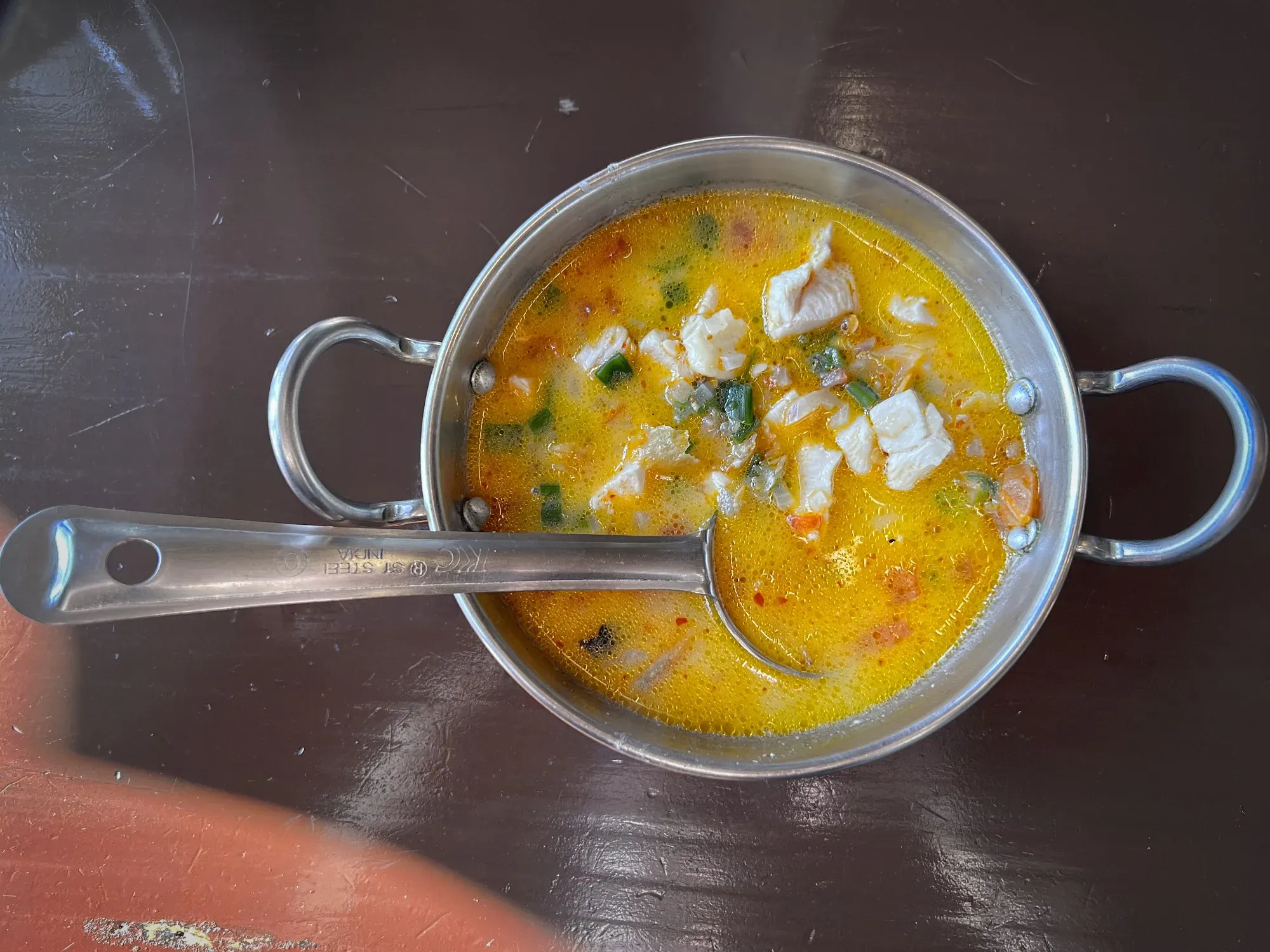
Jasha Maroo is a popular Bhutanese dish made with spicy minced chicken and various spices. The dish is typically served over a bed of rice and is a common comfort food in Bhutanese cuisine. The dish is said to have been developed as a way to use up leftover chicken and is now a staple in many Bhutanese households.
Jasha Maroo is known for its spicy flavor, which comes from a blend of chili peppers, ginger, and garlic. The minced chicken is cooked with these spices and other ingredients such as onions, tomatoes, and coriander to create a flavorful and aromatic dish.
Yaksha Shakam
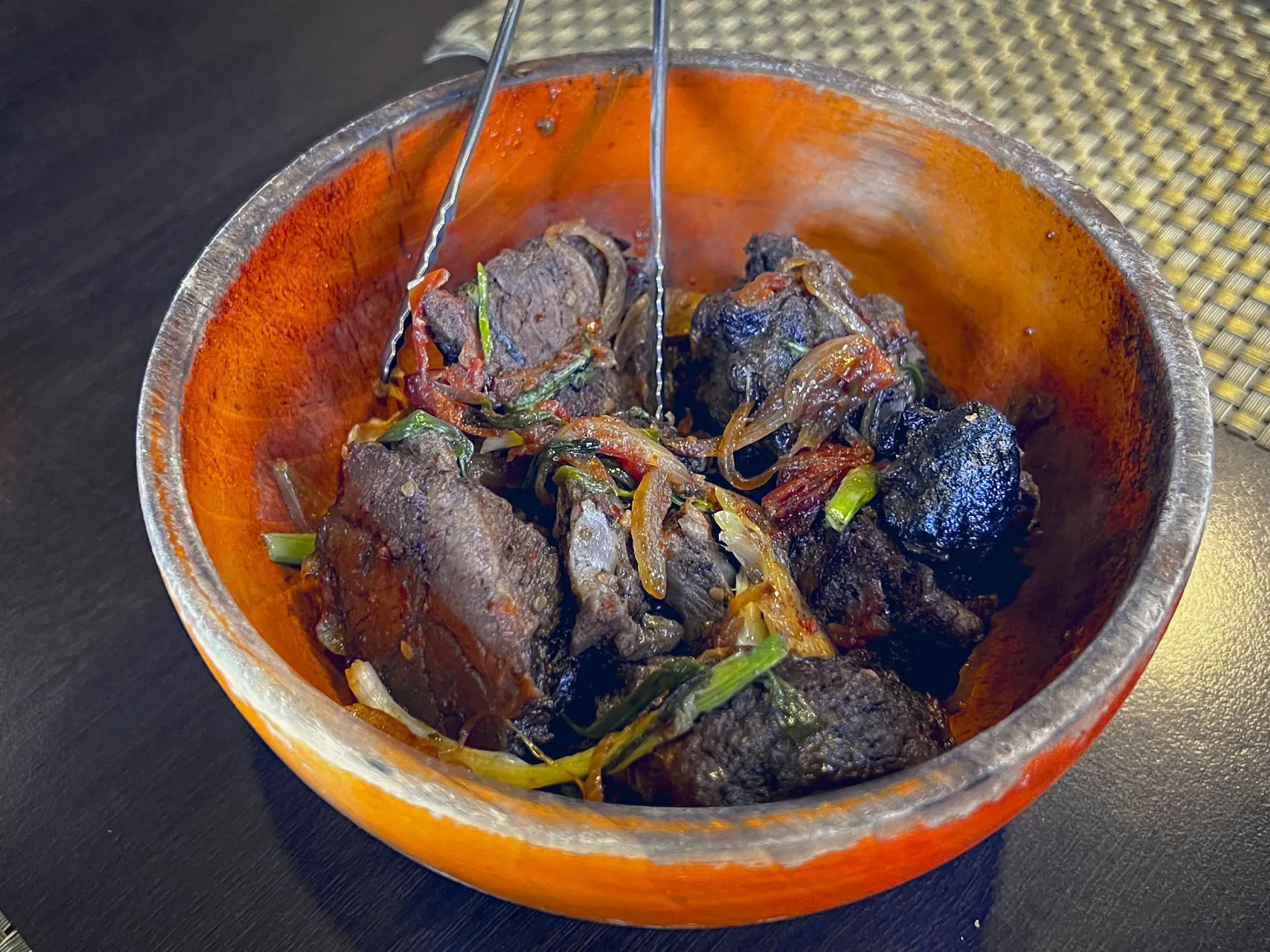
Yaksha Shakam is a traditional Bhutanese dish made with a combination of dried yak meat and ferns. The ferns used in the dish are typically the fiddlehead ferns that grow abundantly in the Bhutanese countryside.
The origin of Yaksha Shakam can be traced back to the nomadic herders who would use yak meat as a primary source of protein. The ferns were added to the dish to provide additional nutrients and flavor, as well as to extend the shelf life of the meat.
Today, Yaksha Shakam is still a popular dish in Bhutanese cuisine, particularly in the eastern part of the country where yak herding is still a way of life for many. The dish is known for its rich, smoky flavor and is typically served as a side dish to accompany rice or other main dishes.
Regional-Specific Shoutouts
Suja
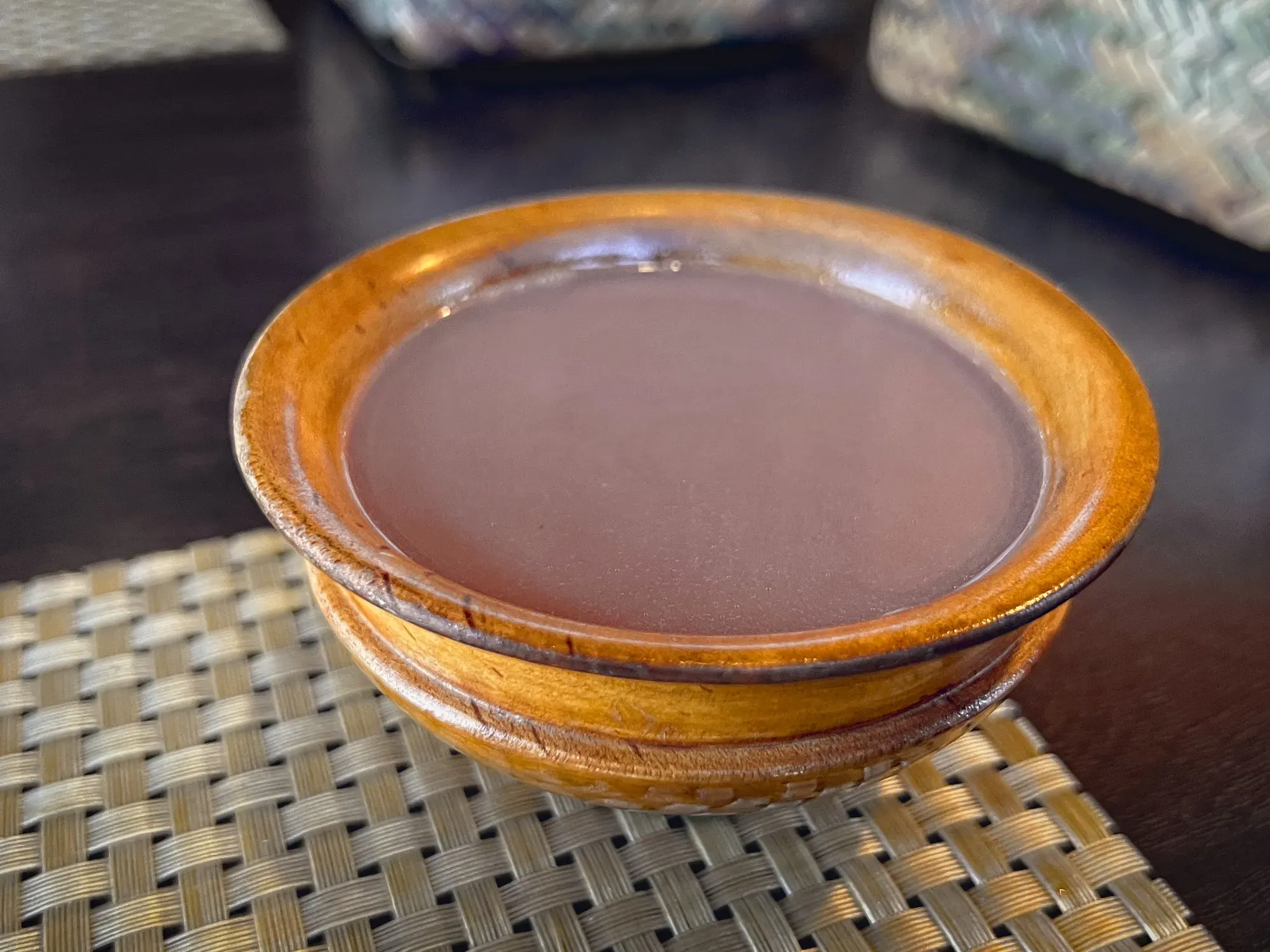
Suja, also known as Butter Tea, is a traditional Bhutanese tea made with butter, salt, and tea leaves. The tea is traditionally made by churning the ingredients together in a wooden churn until the mixture becomes frothy and the flavors are fully blended. It is often served with Zaow (see below).
The origin of Suja can be traced back to Tibet, where it is known as "po cha" and is a staple drink in Tibetan cuisine. It was introduced to Bhutan by Tibetan refugees who fled to the country in the mid-20th century.
Suja is a popular drink in Bhutanese culture. It is known for its unique blend of flavors, its ability to warm the body on cold days, and cultural represenation on the importance of hospitality.
Chhurpi
Chhurpi, also called Chogo, is a dried yak cheese. Since it can take a loooooong time to dissolve and eat, it becomes great for snacking while walking for hours.
Hoentay
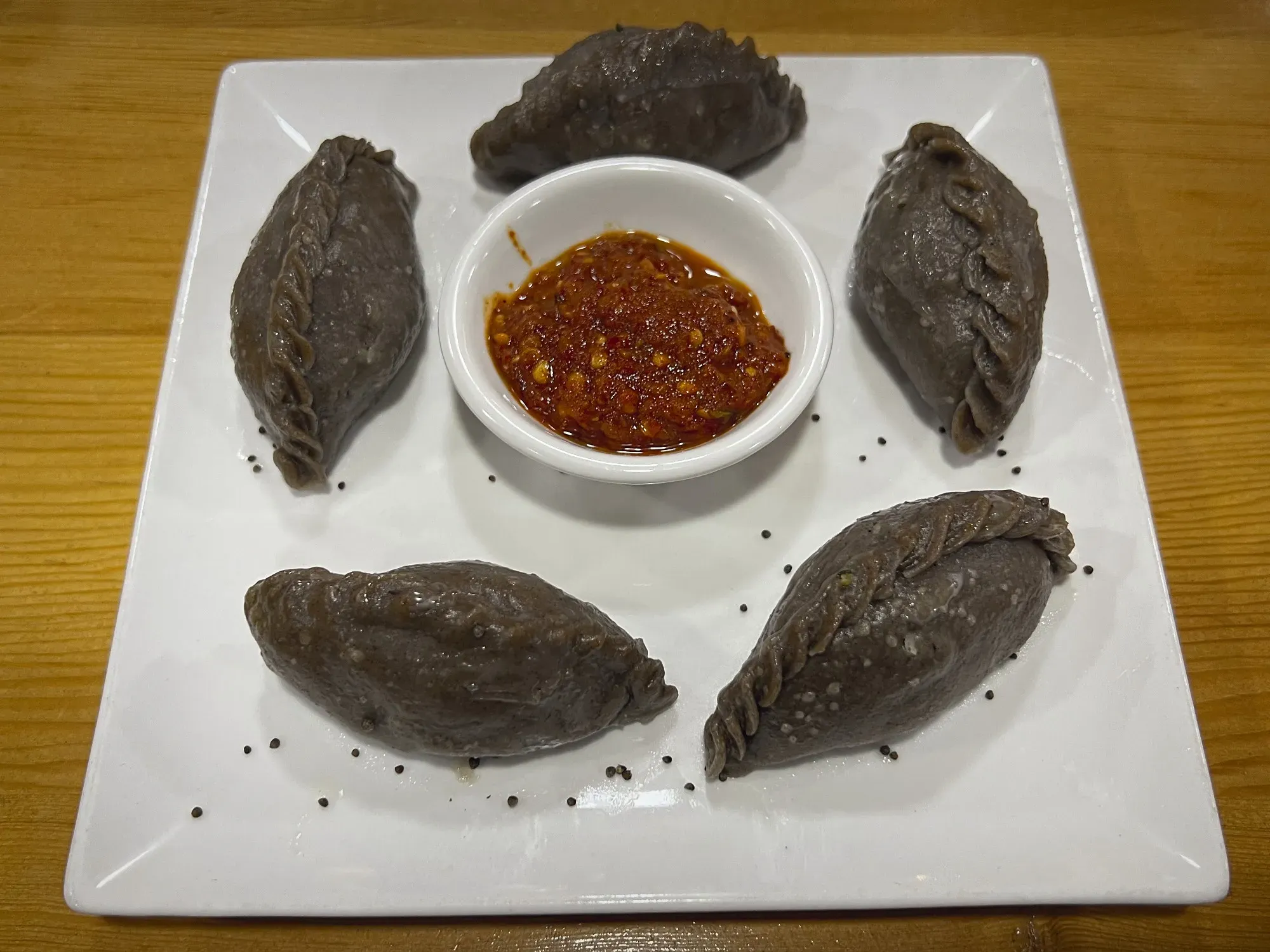
Hoentay is a traditional Bhutanese dish that consists of dumplings filled with a mixture of spinach, cheese, and various spices. The dumplings are then steamed or boiled and served with a spicy tomato sauce. It is basically a buckwheat version of a Tibetan / Nepalese Momo (which are also popular in Bhutan).
Puta
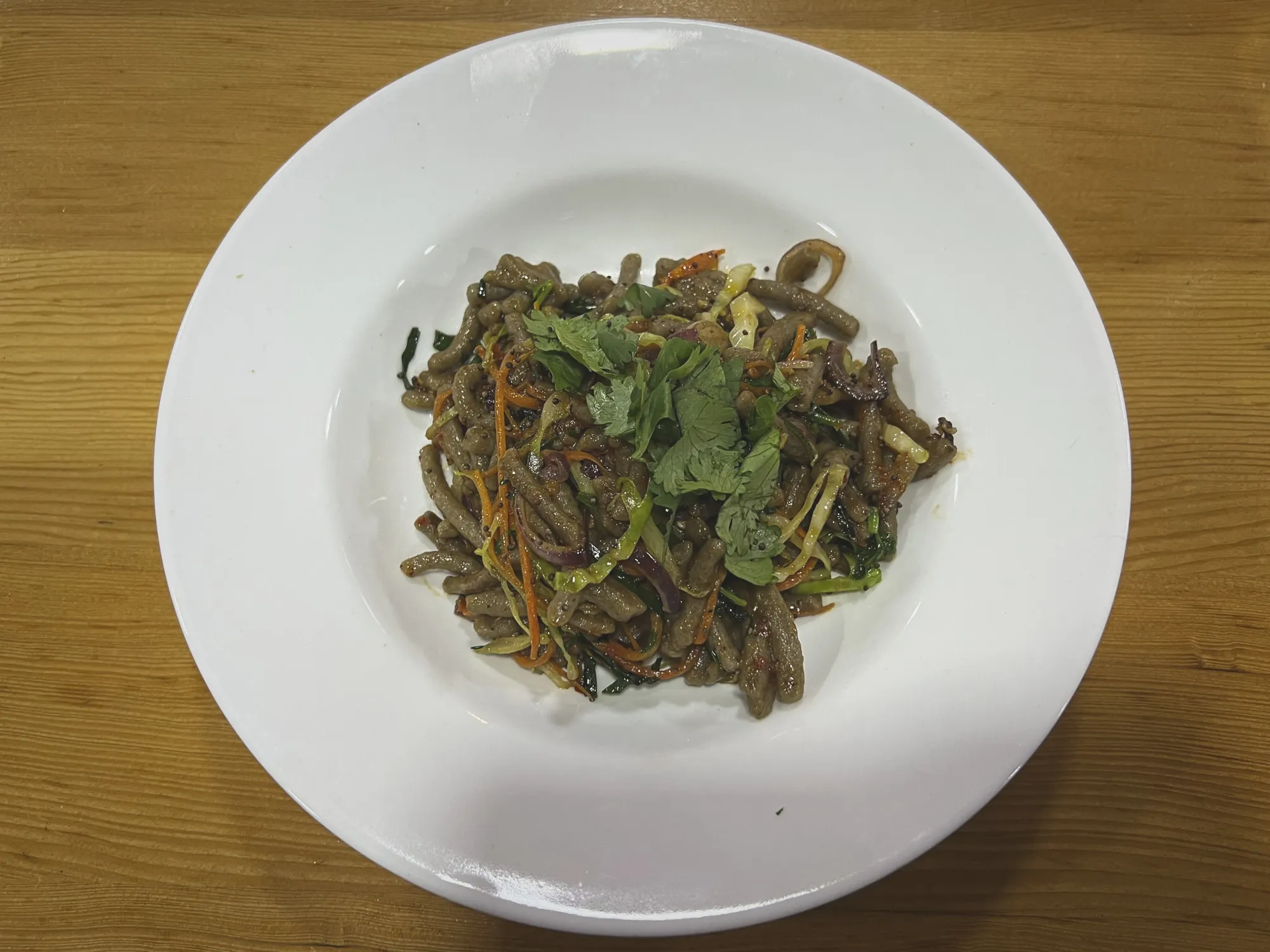
Puta is a traditional Bhutanese dish made with buckwheat flour and water. The mixture is then shaped into small, bite-sized pieces and steamed until cooked through. It can be shaped into snack shapes and dipped in a spicy tomato sauce, or crafted into a noodle / pasta shape and mixed with other ingredients.
The origin of Puta can be traced back to the eastern region of Bhutan, where buckwheat is a commonly grown and used grain. The dish was developed as a way to use up excess buckwheat flour and create a simple, yet satisfying meal.
List of Other Things to Try:
- Zaow – Puffed rice often served as a snack
- Goep - slices of tripe stir fried with dried chilies, green onions, and sometimes small vegetables
- Juma - Bhutanese sausage made with minced meat, rice, and some light spices (sichuan)
- Lom – Turnip leaves
- Khatem – Bitter melon
- Jaju – Milk and vegetable soup
- Goen hogay – Bhutanese cucumber salad
- Khur-le – Bhutanese buckwheat pancake
- Tshampa – Dough starch eaten as a filler with your main entrees
- Ara – Local alcohol
- Zow Shungo – Leftover veggies and rice throw in a dish
Resources
Restaurant Recommendations
Our visit to Bhutan was quick, and so we did not get to explore much of the restaurant scene in the country. In fairness, restaurants are not nearly as culturally popular here. One place we did visit that I would strongly recommend though is Babesa Village Restaurant. This restaurant is set in a traditional-style Bhutanese home where they serve an entire assortment of scrumptious, authentic dishes family-style. The food was incredible, and the environment was a lot of fun.
To see an extensive list of restaurant recommendations in Bhutan, check out the Restaurants page to see a map of our top recommendations for Asia as well as the database with details on restaurants from all around the world.







